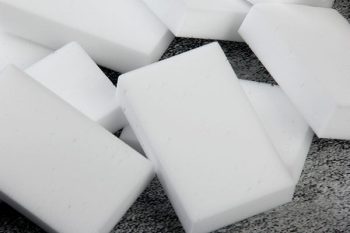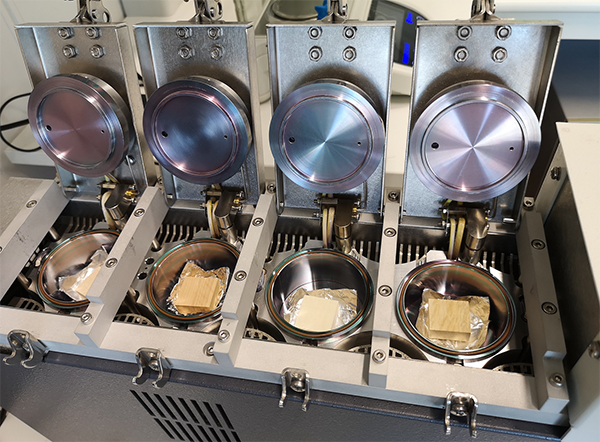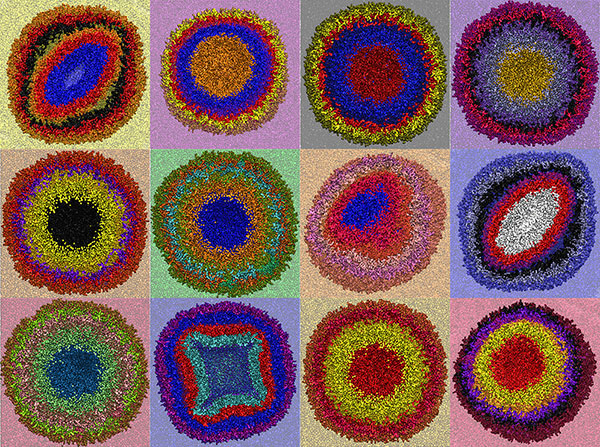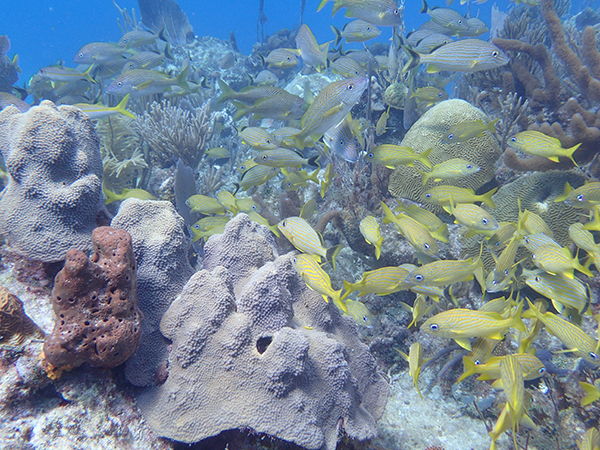FOR IMMEDIATE RELEASE
“Mechanochemical Formation of Poly(melamine-formaldehyde) Microplastic Fibers During Abrasion of Cleaning Sponges”
Environmental Science & Technology
If you own a pair of white shoes or have ever tried to remove crayon from a wall, you’re probably thankful for melamine sponges. These products practically erase tough stains and scuffs through their unique abrasiveness and without additional cleaning products. But these “magic” sponges shed microplastic fibers when worn down. Researchers publishing in ACS’ Environmental Science & Technology report that, worldwide, melamine sponges could release over a trillion microplastic fibers every month.

Melamine foam is made of poly(melamine-formaldehyde) polymer — a network of hard, plastic strands assembled into a soft, lightweight foam that’s surprisingly abrasive, making it the perfect material for very scrubby sponges. But, as the sponges wear away from use, the foam breaks down into smaller pieces that can release microplastic fibers that wash into sewer systems. Once released into the environment, the fibers can be consumed by wildlife and make their way into the food chain. Yu Su, Baoshan Xing, Rong Ji and colleagues wanted to see how a melamine sponge’s density and the roughness of the surface it scrubs affect how quickly the foam breaks down, as well as calculate how many microplastic fibers the sponge sheds.
The team purchased several sponges from three popular brands, then repeatedly rubbed them against textured metal surfaces, causing the foam to wear down. They found that sponges made from denser foam wore down more slowly and produced fewer microplastic fibers than less dense sponges. Next, the team determined that a single sponge releases approximately 6.5 million fibers per gram of worn-out sponge and assumed that all sponges sold, on average, are worn down by 10%. To get a rough idea of how many fibers could be released per month, they looked at Amazon’s monthly sales for August 2023. Assuming these numbers stay consistent, the team calculated that 1.55 trillion fibers from melamine sponges could be released every month. However, this number only takes into account one online retailer, so the actual amount could be even higher.
To help minimize the emission of microplastic fibers, the researchers recommend that manufactures create denser, tougher sponges that are more resistant to wear. Additionally, they suggest that consumers opt for natural cleaning products that do not use plastics and recommend installing filtration systems to capture sloughed-off microplastic fibers either in the home or in wastewater treatment plants.
The authors acknowledge funding from the National Natural Science Foundation of China and the Key-Area Research and Development Program of Guangdong Province.
###
The American Chemical Society (ACS) is a nonprofit organization chartered by the U.S. Congress. ACS’ mission is to advance the broader chemistry enterprise and its practitioners for the benefit of Earth and all its people. The Society is a global leader in promoting excellence in science education and providing access to chemistry-related information and research through its multiple research solutions, peer-reviewed journals, scientific conferences, eBooks and weekly news periodical Chemical & Engineering News. ACS journals are among the most cited, most trusted and most read within the scientific literature; however, ACS itself does not conduct chemical research. As a leader in scientific information solutions, its CAS division partners with global innovators to accelerate breakthroughs by curating, connecting and analyzing the world’s scientific knowledge. ACS’ main offices are in Washington, D.C., and Columbus, Ohio.
To automatically receive press releases from the American Chemical Society, contact newsroom@acs.org.
Note: ACS does not conduct research, but publishes and publicizes peer-reviewed scientific studies.








